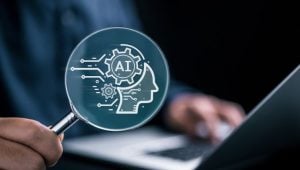Leveraging Technology for Effective Workforce Management
 Publié le 28 June 2024
Publié le 28 June 2024
Organizations in all industries need to understand the benefits of leveraging technology for effective workforce management.
In today’s fast-paced business environment, effective workforce management is essential for maximizing productivity and ensuring employee satisfaction. Technological advancements have revolutionized how organizations manage their workforce, offering tools and solutions that streamline processes, enhance communication, and provide valuable insights. This article explores the key ways technology can improve workforce management, highlighting tools and strategies to optimize your workforce’s performance and well-being.
The Role of Technology in Workforce Management
Enhancing Communication and Collaboration
Effective communication is the cornerstone of successful workforce management. Technologies such as instant messaging, video conferencing, and collaborative platforms like Slack and Microsoft Teams have made it easier for teams to stay connected, regardless of their physical location. These tools enable real-time communication and foster a collaborative environment, which is crucial for maintaining employee engagement and ensuring that everyone is aligned with the company’s goals.
Collaboration tools also integrate project management features, allowing teams to track progress, set deadlines, and allocate resources efficiently. Tools like a desktop time tracker can further enhance productivity by helping teams monitor time spent on various tasks and projects.
Collaboration tools also integrate project management features, allowing teams to track progress, set deadlines, and allocate resources efficiently. These capabilities are especially beneficial for remote work environments, where maintaining a cohesive team dynamic can be challenging. Implementing these technologies can help improve employee engagement, leading to a more productive workforce.
Streamlining Administrative Tasks
Administrative tasks such as payroll, scheduling, and attendance tracking can be time-consuming and prone to errors when handled manually. Workforce management software automates these processes, reducing the administrative burden on HR departments and ensuring accuracy. For example, utilizing payroll management systems not only simplifies the process but also ensures compliance with local regulations, a must-have for companies operating with a globalized workforce. Solutions like the Employer of Record services in China offered by MSA Advisory can help international companies manage these tasks efficiently.
By automating administrative tasks, organizations can allocate more time and resources to strategic activities that drive business growth. This shift not only improves operational efficiency but also enhances employee satisfaction by reducing the frustration associated with manual processes.
Enhancing Employee Training and Development
Continuous learning and development are vital for employee satisfaction and retention. E-learning platforms and Learning Management Systems (LMS) provide employees with access to training resources and development programs tailored to their needs. These platforms allow employees to learn at their own pace and track their progress, ensuring they acquire the skills necessary to excel in their roles.
Organizations can use these tools to create personalized learning paths that align with individual career goals and company objectives. This approach fosters a culture of continuous improvement and empowers employees to take ownership of their professional development. Continuous learning in the workplace is crucial for adapting to industry changes and enhancing workforce capabilities.
Data-Driven Decision Making
Data analytics tools provide valuable insights into employee performance, engagement levels, and overall workforce trends. By analyzing this data, managers can make informed decisions to improve workforce management practices.
Analytics tools also help identify patterns and trends that may not be immediately apparent, enabling proactive measures to address potential issues before they escalate. This data-driven approach ensures that decisions are based on objective information rather than intuition.
Implementing Technology Solutions
Choosing the Right Tools
Selecting the appropriate technology tools is crucial for effective implementation. Companies should assess their specific needs and choose solutions that align with their workforce management goals.
The selection process should involve a thorough evaluation of available options, considering factors such as ease of use, scalability, integration capabilities, and cost. By choosing the right tools, organizations can maximize the return on their investment and ensure long-term success.
Ensuring Employee Buy-In
Successful implementation of new technologies requires employee buy-in. Organizations should involve employees in the selection process, provide adequate training, and communicate the benefits of the new tools to ensure smooth adoption. By addressing employee concerns and demonstrating how the technology will improve their work experience, organizations can foster a positive attitude towards change.
Training programs should be comprehensive and ongoing, offering employees the support they need to become proficient with the new tools. Additionally, organizations should create feedback mechanisms to continuously improve the technology implementation process.
Continuous Improvement
Technology and workforce management practices are continually evolving. Organizations leveraging technology for effective workforce management should regularly review and update their tools and strategies to keep pace with industry trends and technological advancements. This commitment to continuous improvement ensures that workforce management practices remain effective and relevant.
Regular assessments can help identify areas for improvement and inform strategic decisions about future investments in technology. By staying ahead of the curve, organizations can maintain a competitive edge and foster a culture of innovation.
Supporting Sources
To support the importance of leveraging technology in workforce management, consider the following studies and articles:
- A study by McKinsey & Company found that companies using advanced analytics in HR practices saw significant improvements in recruitment, retention, and overall workforce productivity (McKinsey & Company, 2020).
- A report by Deloitte highlighted the role of digital HR tools in enhancing employee experience and driving organizational success (Deloitte, 2021).
- An article from the Society for Human Resource Management (SHRM) emphasized the benefits of integrating technology in workforce management, including increased efficiency and improved employee engagement (SHRM, 2019).
Additionally, implementing the right technology can be essential for creating an effective remote work policy and ensuring employees are equipped to work efficiently from any location.
Conclusion
Technology has become an integral part of effective workforce management, offering tools that enhance communication, streamline administrative tasks, support employee development, and provide data-driven insights. By leveraging these technological solutions, companies can improve their workforce management practices, leading to higher productivity and employee satisfaction.
Implementing the right technology and involving employees in the process are key steps toward realizing the full benefits of these advancements. As the business landscape continues to evolve, staying updated with the latest trends and continuously improving your workforce management strategies will be essential for long-term success.







